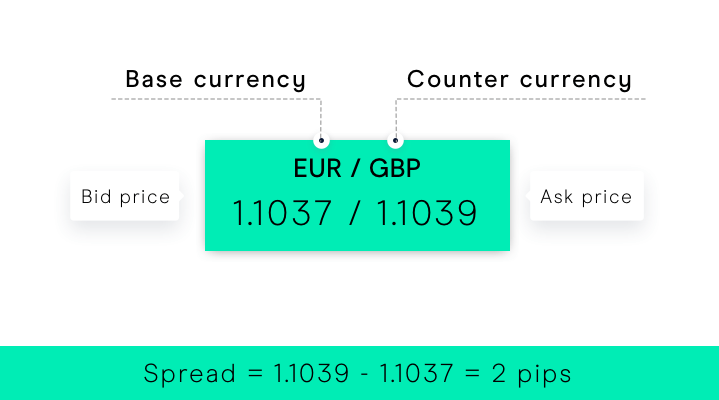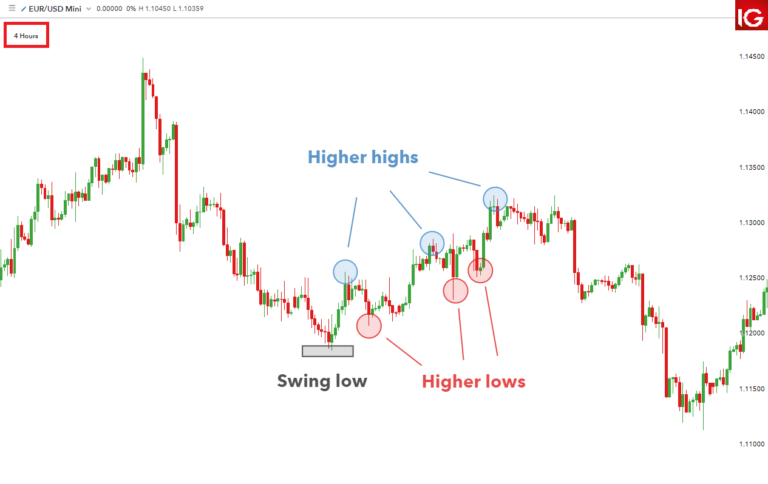Introduction
In the realm of financial markets, Forex trading stands out as one of the most accessible and potentially lucrative avenues for generating passive income. Unlike traditional investments like stocks or real estate, Forex (foreign exchange) trading operates 24 hours a day, five days a week, offering ample opportunities for traders to capitalize on market movements.
In this guide, we will delve into the fundamentals of Forex trading, explore its potential for passive income generation, discuss the development of effective trading strategies, and examine the role of automated trading systems and copy trading in maximizing passive income. By understanding these concepts and implementing them wisely, individuals can pave the way towards unlocking financial freedom through Forex trading.
Understanding Forex Trading and its Potential for Passive Income
Forex trading, also known as foreign exchange trading or currency trading, is the decentralized market where participants buy, sell, exchange, and speculate on currencies. It operates globally, 24 hours a day, five days a week, allowing traders to engage in transactions across different time zones. Unlike stocks or commodities, which have specific trading hours, the Forex market offers continuous trading opportunities, making it highly attractive to traders seeking passive income.
The cornerstone of Forex trading is the exchange of one currency for another at an agreed-upon exchange rate. Currency pairs are quoted in terms of one currency’s value relative to another, with the most commonly traded pairs being EUR/USD, USD/JPY, GBP/USD, and USD/CHF, among others. Traders aim to profit from fluctuations in exchange rates by buying a currency pair when they anticipate its value to rise and selling it when they expect it to fall.
One of the key advantages of Forex trading for passive income is its accessibility. Unlike traditional financial markets that may require significant capital or specialized knowledge to participate, Forex trading can be accessed by anyone with an internet connection and a computer or smartphone. This democratization of trading has opened up opportunities for individuals worldwide to engage in currency trading and potentially generate passive income.
Moreover, the Forex market’s liquidity and volatility make it an attractive playground for traders. Liquidity refers to the ease with which assets can be bought or sold without significantly affecting their prices. With an average daily trading volume exceeding $6 trillion, the Forex market is the most liquid financial market globally, ensuring that traders can enter and exit positions swiftly and at competitive prices.
Volatility, on the other hand, refers to the magnitude of price fluctuations within a given period. While volatility may pose risks, it also presents opportunities for profit. The Forex market’s dynamic nature means that currency prices are constantly fluctuating, creating numerous trading opportunities for traders to capitalize on short-term price movements and generate passive income.
Additionally, Forex trading offers flexibility in terms of trading hours and location. As a decentralized market, Forex trading is not bound by a specific exchange or trading floor, allowing traders to participate from anywhere in the world at any time. This flexibility enables individuals to engage in Forex trading as a part-time endeavor, supplementing their existing income streams with passive income from trading activities.
In summary, the allure of Forex trading for passive income stems from its accessibility, liquidity, volatility, and flexibility. With a low barrier to entry and the potential for substantial profits, Forex trading has become a popular choice for individuals looking to diversify their investment portfolios and achieve financial independence. However, it’s essential for traders to approach Forex trading with caution, diligence, and a well-defined strategy to navigate the complexities of the market effectively.
Developing a Forex Trading Strategy for Passive Income
Developing a successful Forex trading strategy is essential for generating consistent passive income in the currency markets. A well-defined strategy provides structure, discipline, and a systematic approach to trading, helping traders navigate the complexities of the Forex market effectively. Here are some key components to consider when developing a Forex trading strategy for passive income:
- Define Your Objectives and Risk Tolerance:
Before diving into the intricacies of trading, it’s crucial to define your objectives and assess your risk tolerance. Determine your financial goals, whether they involve generating supplemental income, building long-term wealth, or achieving financial independence. Additionally, assess how much risk you are willing to take on each trade and establish risk management parameters to protect your capital. - Choose a Trading Style:
Forex trading offers various styles, including day trading, swing trading, and position trading. Each style requires a different approach to timeframes, market analysis, and risk management. Consider your schedule, personality, and preferences to select a trading style that suits your lifestyle and objectives. For passive income generation, swing trading or position trading may be more suitable, as they involve holding positions for longer durations to capitalize on larger price movements. - Conduct Market Analysis:
Effective market analysis is crucial for identifying high-probability trading opportunities. There are two primary methods of analysis in Forex trading: technical analysis and fundamental analysis. Technical analysis involves analyzing historical price data, chart patterns, and technical indicators to forecast future price movements. Fundamental analysis, on the other hand, focuses on economic indicators, geopolitical events, and central bank policies to gauge the underlying factors driving currency valuations. Incorporating a combination of both technical and fundamental analysis can provide a comprehensive view of the market and enhance decision-making. - Develop Entry and Exit Rules:
Establish clear rules for entering and exiting trades based on your analysis and trading strategy. Define specific criteria for identifying trade setups, including entry points, stop-loss levels, and profit targets. Utilize technical indicators, such as moving averages, oscillators, and trendlines, to confirm trade signals and minimize false signals. Similarly, establish rules for exiting trades to lock in profits or cut losses based on predetermined criteria. - Implement Risk Management Techniques:
Risk management is paramount in Forex trading to preserve capital and mitigate losses. Determine the maximum amount of capital you are willing to risk on each trade, typically expressed as a percentage of your trading account balance. Set stop-loss orders to limit potential losses and adhere to proper position sizing to control risk exposure. Additionally, consider diversifying your trading portfolio across multiple currency pairs to spread risk and minimize correlation. - Test and Refine Your Strategy:
Once you’ve developed a trading strategy, backtest it using historical data to assess its performance and viability. Analyze the results to identify strengths and weaknesses and make necessary adjustments to optimize the strategy. Continuously monitor the performance of your trading strategy in live market conditions and adapt to changing market dynamics as needed. Remember that no strategy is foolproof, and ongoing refinement is essential for long-term success.
In conclusion, developing a Forex trading strategy tailored to your objectives, risk tolerance, and trading style is crucial for generating consistent passive income in the currency markets. By incorporating elements of technical and fundamental analysis, implementing robust risk management techniques, and continuously testing and refining your strategy, you can enhance your chances of success and unlock the full potential of Forex trading as a source of passive income.
Additionally, risk management is paramount in Forex trading to protect capital and minimize losses. This may involve setting stop-loss orders, position sizing based on risk-reward ratios, and diversifying trading portfolios across different currency pairs.
Passive Income Opportunities in Forex Trading – Automated Trading Systems and Copy Trading
Passive income opportunities in Forex trading have expanded significantly with the rise of automated trading systems and copy trading platforms. These innovative tools offer traders the ability to generate income without the need for constant monitoring or manual intervention. Let’s delve deeper into how automated trading systems and copy trading platforms facilitate passive income generation in the Forex market:
- Automated Trading Systems (Expert Advisors or Forex Robots):
Automated trading systems, commonly referred to as Expert Advisors (EAs) or Forex robots, are computer programs designed to execute trades automatically based on pre-defined trading algorithms. These algorithms are created by experienced traders or developers and are programmed to analyze market data, identify trading opportunities, and execute trades with precision and speed.
The allure of automated trading systems for passive income lies in their ability to operate without human intervention, thereby eliminating emotional biases and human errors from trading decisions. EAs can continuously monitor the market 24/7, execute trades at optimal times, and react swiftly to changing market conditions, all without the need for sleep or rest.
Moreover, automated trading systems offer scalability, allowing traders to execute multiple trades simultaneously across different currency pairs and timeframes. This scalability can significantly increase the potential for passive income generation by diversifying trading strategies and spreading risk across various market conditions.
However, it’s essential to note that while automated trading systems offer promising opportunities for passive income, they are not immune to risks. Poorly designed algorithms, over-optimization, and market volatility can lead to significant losses. Therefore, thorough backtesting, optimization, and risk management are crucial to ensure the effectiveness and stability of automated trading systems.
- Copy Trading Platforms:
Copy trading platforms provide another avenue for passive income generation in Forex trading by allowing individuals to replicate the trades of experienced traders automatically. These platforms typically feature a diverse pool of skilled traders, each with their own track record, trading style, and risk profile.
Novice traders can browse through the profiles of experienced traders, assess their performance metrics, and select traders to copy based on their preferences and risk tolerance. Once a trader is chosen, the copy trading platform will automatically mirror the selected trader’s trades in the follower’s account in real-time, proportionally to the follower’s capital.
The key advantage of copy trading platforms is the ability for novice traders to leverage the expertise of seasoned professionals without the need for extensive market knowledge or experience. By following successful traders and replicating their trading strategies, individuals can potentially generate passive income while learning from established market participants.
However, it’s essential for followers to conduct thorough due diligence when selecting traders to copy, considering factors such as trading performance, risk management practices, and trading history. Additionally, followers should diversify their copy trading portfolio by allocating funds to multiple traders to spread risk and minimize dependency on any single trader.
In conclusion, automated trading systems and copy trading platforms offer promising opportunities for passive income generation in Forex trading. By harnessing the power of technology and leveraging the expertise of experienced traders, individuals can potentially generate consistent profits in the Forex market with minimal effort and involvement. However, it’s crucial to exercise caution, conduct thorough research, and implement robust risk management practices to mitigate potential risks and maximize the effectiveness of these passive income strategies.
Monitoring and Optimizing Your Forex Trading for Maximum Passive Income
Monitoring and optimizing your Forex trading activities are essential steps to maximize passive income potential and ensure long-term success in the currency markets. While automated trading systems and copy trading platforms offer convenience, they still require active oversight and periodic adjustments to adapt to changing market conditions. Here’s how you can effectively monitor and optimize your Forex trading for maximum passive income:
- Regular Performance Analysis:
Regularly analyze the performance of your trading activities to assess profitability, identify strengths and weaknesses, and make data-driven decisions. Track key performance metrics such as win rate, risk-adjusted returns, maximum drawdown, and average trade duration. Use this data to evaluate the effectiveness of your trading strategy and identify areas for improvement. - Backtesting and Optimization:
Backtesting involves testing your trading strategy against historical market data to evaluate its performance and reliability. Use backtesting software to simulate trades over past market conditions and assess how well your strategy would have performed. Identify patterns, trends, and market dynamics that influence your strategy’s profitability and optimize parameters accordingly. This may involve adjusting entry and exit criteria, risk management rules, and position sizing to improve overall performance. - Stay Informed About Market Developments:
Stay abreast of market developments, economic news, and geopolitical events that could impact currency markets. Follow financial news outlets, economic calendars, and central bank announcements to stay informed about important events and trends. Understanding the fundamental factors driving currency movements can help you anticipate market shifts and adjust your trading strategy accordingly. - Adapt to Changing Market Conditions:
Forex markets are dynamic and subject to constant change, requiring traders to adapt their strategies accordingly. Monitor market trends, volatility levels, and liquidity conditions to identify shifts in market dynamics. Adjust your trading approach to align with prevailing market conditions, whether it involves scaling back during periods of low volatility or capitalizing on emerging trends. - Maintain Discipline and Emotional Control:
Maintaining discipline and emotional control is paramount in Forex trading to avoid impulsive decision-making and irrational behavior. Develop a set of trading rules and guidelines that outline your trading strategy, risk management principles, and trade management rules. Stick to these rules consistently and avoid deviating from your plan, even during periods of market volatility or uncertainty. Additionally, practice patience and resilience in the face of setbacks, knowing that consistent adherence to your trading plan is key to long-term success.
By regularly monitoring and optimizing your Forex trading activities, you can maximize passive income potential and achieve sustainable profitability in the currency markets. Continuously evaluate your trading strategy, adapt to changing market conditions, and maintain discipline to capitalize on opportunities and mitigate risks effectively. With dedication, diligence, and a proactive approach, you can unlock the full potential of Forex trading as a source of passive income.
Conclusion – Unlocking Financial Freedom through Forex Trading
In conclusion, Forex trading offers a promising pathway to financial freedom through passive income generation. By understanding the fundamentals of Forex trading, developing effective trading strategies, leveraging automated trading systems and copy trading platforms, and continuously monitoring and optimizing trading activities, individuals can unlock the full potential of Forex trading as a source of passive income.
While success in Forex trading requires dedication, discipline, and continuous learning, the rewards can be significant for those who approach it with diligence and perseverance. With the right mindset and strategy, anyone can embark on the journey towards financial independence through Forex trading.
Read our latest article on Forex Hedging
FAQs
- FAQ: What is Forex trading?
- Answer: Forex trading, also known as foreign exchange trading, involves the buying and selling of currencies in the global currency market.
- FAQ: What is passive income in Forex trading?
- Answer: Passive income in Forex trading refers to generating income from currency trading activities without the need for constant monitoring or active involvement.
- FAQ: What are automated trading systems in Forex?
- Answer: Automated trading systems, also known as expert advisors or Forex robots, are computer programs designed to execute trades automatically based on pre-defined trading algorithms.
- FAQ: How do copy trading platforms work?
- Answer: Copy trading platforms allow individuals to replicate the trades of experienced traders automatically. Users can follow successful traders and automatically mirror their trades in their own trading accounts.
- FAQ: Why is it important to monitor and optimize Forex trading activities?
- Answer: Monitoring and optimizing Forex trading activities are essential to adapt to changing market conditions, maximize profitability, and minimize risks.
- FAQ: What is backtesting in Forex trading?
- Answer: Backtesting involves testing a trading strategy against historical market data to evaluate its performance and reliability.
- FAQ: How can I stay informed about market developments in Forex trading?
- Answer: You can stay informed about market developments by following financial news outlets, economic calendars, and central bank announcements.
- FAQ: What are some common risk management techniques in Forex trading?
- Answer: Common risk management techniques in Forex trading include setting stop-loss orders, diversifying trading portfolios, and implementing proper position sizing.
- FAQ: How can I maintain discipline and emotional control in Forex trading?
- Answer: You can maintain discipline and emotional control in Forex trading by adhering to trading rules, practicing patience, and avoiding impulsive decision-making.
- FAQ: What steps can I take to optimize my Forex trading strategy?
- Answer: You can optimize your Forex trading strategy by regularly analyzing performance, conducting backtesting, staying informed about market developments, adapting to changing market conditions, and maintaining discipline.
Click here to read more on Passive Income





